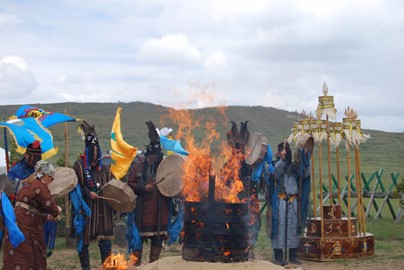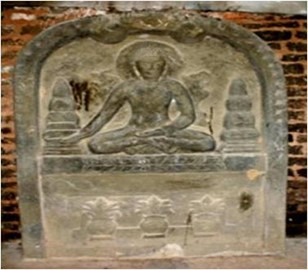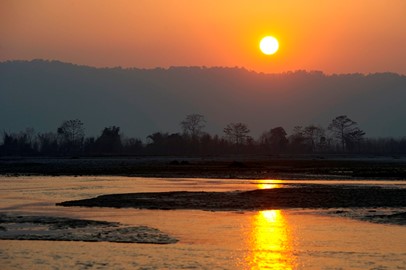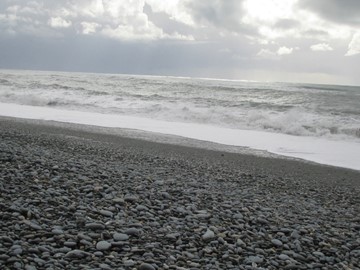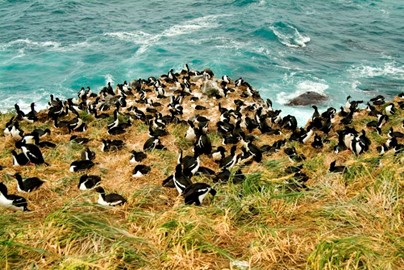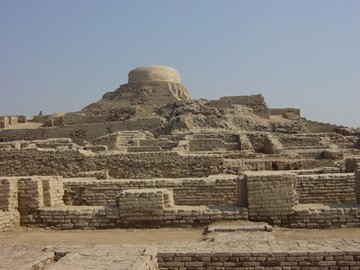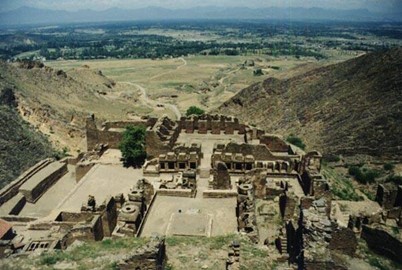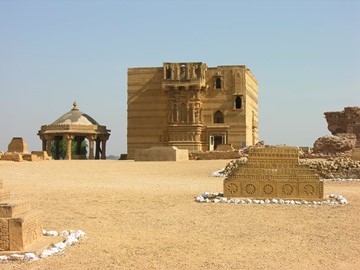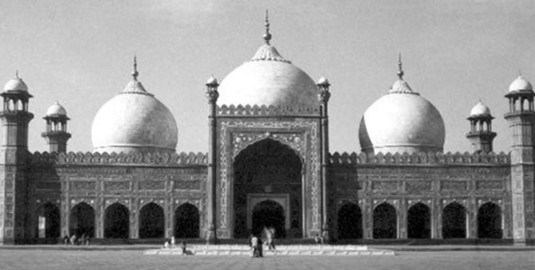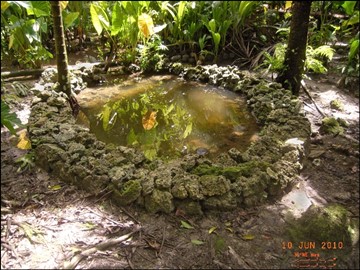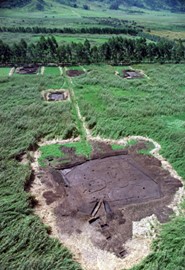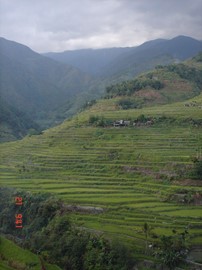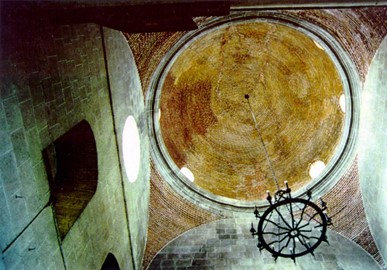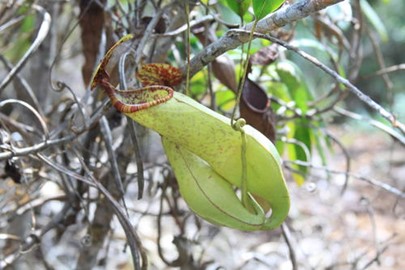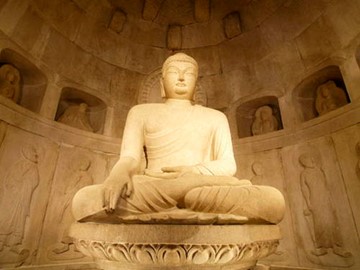region :: asia and the pacific
Burkhan Khaldun
Burkhan Khaldun, a UNESCO World Heritage site in Mongolia, is a sacred mountain revered for its spiritual and historical significance. It is deeply tied to Mongolian culture as the legendary burial place of Genghis Khan and a key site in the development of the Mongol Empire. The mountain's pristine natural environment, including forests, rivers, and diverse wildlife, reflects its role as a place of worship and pilgrimage for centuries. Its designation highlights its importance as a symbol of national identi... Read More
Pyu Ancient Cities
The Pyu Ancient Cities, a UNESCO World Heritage site in Myanmar, encompass the archaeological remains of three major cities—Hanlin, Beikthano, and Sri Ksetra—flourishing between the 2nd century BCE and the 9th century CE. These cities showcase the Pyu civilization’s advanced urban planning, with impressive brick structures, stupas, and fortifications reflecting their architectural prowess and Buddhist influence. The site provides critical evidence of early Southeast Asian trade networks and cultural exchang... Read More
Sagarmatha
Sagarmatha National Park, a UNESCO World Heritage site in Nepal, is renowned for its stunning Himalayan landscape, including the world’s highest peak, Mount Everest. Established in 1976, the park protects a diverse ecosystem of rare flora and fauna, such as snow leopards and Himalayan tahrs, alongside unique Sherpa culture and sacred monasteries. It serves as a critical conservation area and a global symbol of natural beauty and biodiversity.
Chitwan
Chitwan National Park, a UNESCO World Heritage site in Nepal, is renowned for its rich biodiversity and conservation efforts. Established in 1973, it hosts a variety of endangered species, including the Bengal tiger, one-horned rhinoceros, and Gharial crocodile, thriving in its lush forests, grasslands, and riverine ecosystems. The park also holds cultural significance with the indigenous Tharu communities, offering a blend of natural beauty and traditional heritage. It stands as a premier destination for w... Read More
Lumbini
Lumbini, a UNESCO World Heritage site in Nepal, is renowned as the birthplace of Siddhartha Gautama, the founder of Buddhism, born in 563 BCE. This sacred site features the ancient Maya Devi Temple, marking the exact spot of his birth, alongside the Ashokan Pillar, erected by Emperor Ashoka in 249 BCE to commemorate his visit. The surrounding monastic zones, with ruins of stupas and monasteries, reflect its historical significance as a pilgrimage center. Today, Lumbini attracts visitors worldwide for its sp... Read More
Kathmandu Valley
Kathmandu Valley, a UNESCO World Heritage site in Nepal, is renowned for its rich cultural heritage and historical significance. This ancient region is home to an array of stunning temples, palaces, and monuments, reflecting a unique blend of Hindu and Buddhist traditions. Its well-preserved medieval architecture, intricate wood carvings, and vibrant festivals highlight the artistic and spiritual legacy of the Newar people, the valley’s indigenous inhabitants. The site’s enduring charm lies in its ability t... Read More
Tongariro
Tongariro National Park, a World Heritage site in New Zealand, is renowned for its stunning volcanic landscapes and cultural significance. Established in 1887, it features active volcanoes, including Mount Tongariro, Mount Ngauruhoe, and Mount Ruapehu, which offer dramatic scenery and diverse ecosystems. The park holds deep spiritual importance to the Māori people, reflected in its designation as one of the world’s first dual World Heritage sites for both natural and cultural value. Visitors can explore its... Read More
Te Wahipounamu
Te Wahipounamu is a UNESCO World Heritage site located in New Zealand, recognized for its outstanding natural beauty and geological significance. It encompasses a diverse landscape of rugged mountains, glaciers, fjords, and rainforests, hosting a rich variety of unique flora and fauna, including ancient species like the takahe and kiwi. The site is also culturally significant, tied to Māori heritage and traditional resource use, making it a globally important conservation area.
Sub Antarctic Islands
The Sub-Antarctic Islands, a World Heritage site in New Zealand, are a remote and pristine collection of island groups renowned for their unique biodiversity and rugged natural beauty. These islands host a variety of rare and endemic species, including seabirds, penguins, and marine mammals, thriving in an environment shaped by harsh weather and isolation. Recognized for their ecological significance, they serve as critical habitats and breeding grounds, offering a living testament to the resilience of natu... Read More
Moenjodaro
The Archaeological Ruins at Moenjodaro, a UNESCO World Heritage site in Pakistan, represent one of the best-preserved urban settlements of the ancient Indus Valley Civilization, dating back to around 2500 BCE. This remarkable site showcases advanced engineering with its sophisticated drainage systems, brick-built structures, and a well-planned grid layout, reflecting the ingenuity of its Bronze Age inhabitants. Key features include the Great Bath, a large public water tank, and the so-called Granary, offeri... Read More
Taxila
Taxila, a UNESCO World Heritage site in Pakistan, is an ancient city renowned for its historical and cultural significance. Dating back to the 6th century BCE, it served as a major center of learning and trade, influenced by Persian, Greek, and Buddhist civilizations. The site features a wealth of archaeological remains, including stupas, monasteries, and urban settlements, reflecting its role as a crossroads of ancient cultures. Today, Taxila stands as a testament to the region’s rich past, offering valuab... Read More
Takht i Bahi and Sahr i Bahlol
Takht-i-Bahi and Sahr-i-Bahlol, a UNESCO World Heritage site in Pakistan, represent a well-preserved Buddhist monastic complex from the 1st to 7th centuries CE. Takht-i-Bahi features a hilltop monastery with intricately designed stupas, meditation cells, and assembly halls, showcasing ancient Buddhist architecture and urban planning. Nearby, Sahr-i-Bahlol contains archaeological remains of a thriving settlement linked to the monastery, offering insights into the region’s historical and religious significanc... Read More
Makli, Thatta
Makli, Thatta, a UNESCO World Heritage site in Pakistan, is one of the largest necropolises in the world, showcasing an extraordinary collection of funerary architecture spanning from the 14th to 18th centuries. This historic cemetery features intricately carved tombs, mausoleums, and monuments, reflecting the rich cultural and artistic heritage of the Samma, Arghun, Tarkhan, and Mughal dynasties. The site stands as a testament to the region's historical significance and architectural prowess, drawing schol... Read More
Fort and Shalamar Gardens
The Fort and Shalamar Gardens in Lahore, a UNESCO World Heritage site in Pakistan, represent a stunning blend of Mughal architecture and landscaped beauty. The Fort, a sprawling citadel, showcases intricate palaces, halls, and mosques adorned with detailed tile work and marble, reflecting the grandeur of the Mughal Empire. Adjacent to it, the Shalamar Gardens, designed in the Persian charbagh style, feature terraced lawns, fountains, and pavilions that once served as a royal retreat. Together, they stand as... Read More
Rohtas Fort
Rohtas Fort, a UNESCO World Heritage site in Pakistan, is a remarkable 16th-century fortress built by Sher Shah Suri to defend against Mughal incursions. This sprawling military complex showcases a blend of Afghan and Indian architectural styles, featuring massive walls, imposing gates, and strategic bastions designed for defense. Its historical significance lies in its role as a symbol of power and resilience, reflecting the engineering prowess of its time. Today, it stands as a well-preserved testament to... Read More
Rock Islands Southern Lagoon
Rock Islands Southern Lagoon, a UNESCO World Heritage site in Palau, is a stunning marine landscape featuring over 400 limestone islands covered in lush vegetation, surrounded by turquoise waters and vibrant coral reefs. This unique ecosystem supports an extraordinary biodiversity, including diverse marine life, rare species like the dugong, and extensive seagrass beds. Its geological formations, shaped by ancient coral reefs and erosion, offer a glimpse into millions of years of natural history. The site a... Read More
Kuk Early
The Kuk Early Agricultural Site, a UNESCO World Heritage site in Papua New Guinea, spans 116 hectares of swamps in the western highlands, situated 1,500 meters above sea level. Archaeological evidence reveals it as one of the world’s earliest examples of independent agricultural development, with wetland reclamation and cultivation practices dating back 7,000 to possibly 10,000 years. The site showcases a significant technological shift from plant exploitation to organized agriculture around 6,500 years ago... Read More
Vigan
Vigan, a UNESCO World Heritage site in the Philippines, is a remarkably well-preserved example of a Spanish colonial town, showcasing a unique blend of Asian and European architectural influences. Established in the 16th century, its cobblestone streets, historic houses, and grand cathedral reflect a rich cultural heritage shaped by trade and colonization. The city’s urban planning and traditional structures, largely intact, offer a glimpse into its past as a key trading hub. Today, Vigan stands as a living... Read More
Puerto Princesa Subterranean River
The Puerto-Princesa Subterranean River, a UNESCO World Heritage site in the Philippines, is a stunning natural wonder featuring a navigable underground river that stretches over 8 kilometers through a vast limestone cave system. This unique ecosystem boasts dramatic karst landscapes, pristine waters, and a rich biodiversity, including rare species like the Philippine cockatoo and monitor lizard. Visitors can explore the river by boat, marveling at its towering stalactites and stalagmites, while its global s... Read More
Rice Terraces of the Philippines
The Rice Terraces of the Philippine Cordilleras, a UNESCO World Heritage site, are an architectural marvel created by the Ifugao people over 2,000 years ago. These hand-carved terraces, built into steep mountainsides, demonstrate remarkable engineering skill and sustainable farming practices, utilizing an intricate irrigation system that harnesses water from the forests above. Often called the 'Eighth Wonder of the World,' they reflect a harmonious blend of human ingenuity and natural landscape, preserved t... Read More
Tubbataha Reefs
Tubbataha Reefs Natural Park, a UNESCO World Heritage site in the Philippines, is a pristine marine sanctuary renowned for its exceptional biodiversity. Located in the Sulu Sea, it features vibrant coral reefs, diverse marine species, and serves as a critical habitat for endangered sea turtles and seabirds. This protected area is a globally recognized gem, attracting researchers and divers to its rich underwater ecosystem.
Baroque Churches
The Baroque Churches of the Philippines, recognized as a UNESCO World Heritage site, exemplify a unique fusion of European Baroque architecture and local Filipino craftsmanship. Constructed between the 16th and 18th centuries during Spanish colonial rule, these churches feature robust stone structures designed to withstand earthquakes, adorned with intricate carvings and ornate interiors. They stand as significant cultural and historical landmarks, reflecting the spread of Christianity and the architectural... Read More
Mount Hamiguitan
Mount Hamiguitan, a UNESCO World Heritage site in the Philippines, is renowned for its unique biodiversity and stunning natural landscapes. This protected sanctuary hosts a variety of rare and endemic species, including the Philippine eagle and the pitcher plant, thriving within its diverse ecosystems ranging from lowland forests to montane shrublands. The mountain's pygmy forest, one of the few in the world, adds to its ecological significance, making it a critical site for conservation and scientific stud... Read More
Seokguram Grotto and Bulguksa Temple
Seokguram Grotto and Bulguksa Temple, a UNESCO World Heritage site, exemplify Korea's rich Buddhist heritage and architectural prowess. The grotto, an artificial cave carved into granite, houses a serene Buddha statue surrounded by intricately sculpted bodhisattvas, showcasing exceptional 8th-century artistry. Adjacent Bulguksa Temple, a wooden complex, reflects harmonious design with its elevated platforms, ornate pagodas, and tranquil courtyards, embodying spiritual and aesthetic ideals of the era. Togeth... Read More
Haeinsa Temple
Haeinsa Temple, a UNESCO World Heritage site in South Korea, is renowned for its historical and cultural significance as a center of Korean Buddhism. Founded in 802 CE during the Silla Dynasty, it houses the Tripitaka Koreana, an extraordinary collection of over 81,000 wooden printing blocks inscribed with Buddhist scriptures, completed in the 13th century. The temple's Janggyeong Panjeon, a specially designed storage facility, has preserved these blocks for centuries, showcasing remarkable architectural in... Read More
